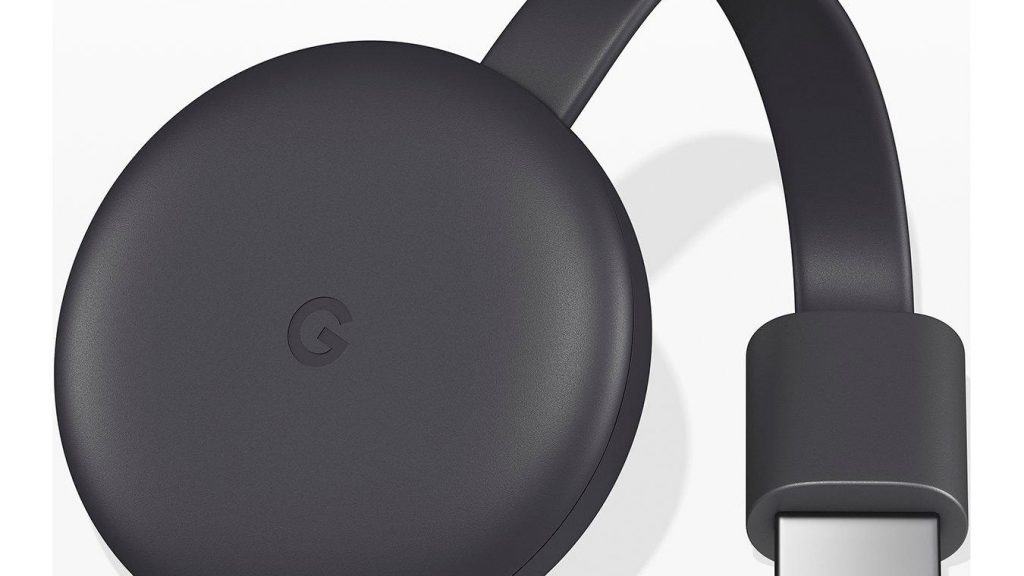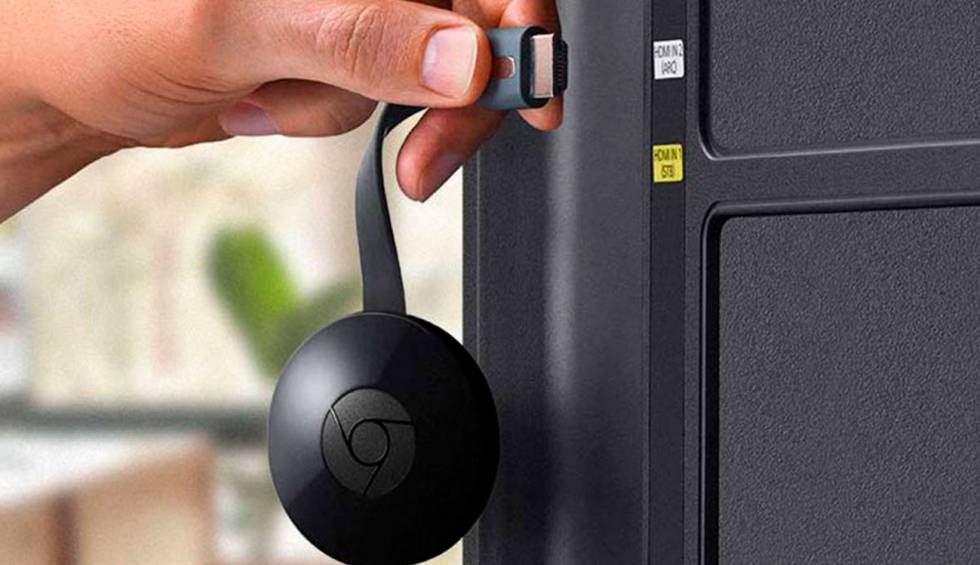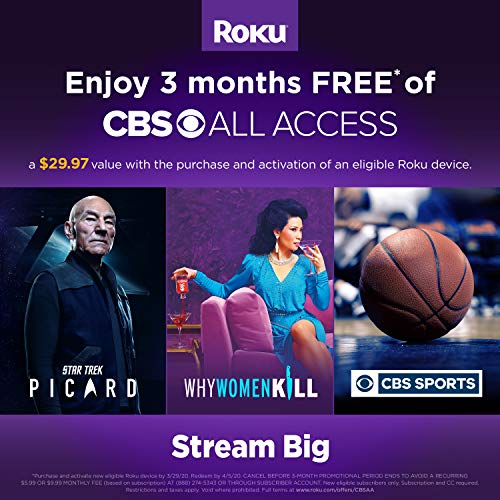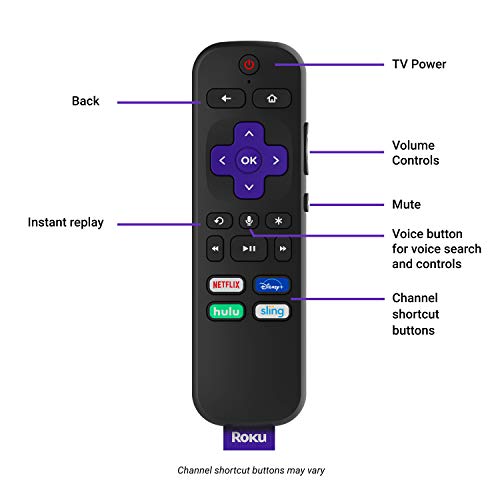Chromecast vs Roku – Top Streaming Device Battle!
Chromecast and Roku are some of the top names in streaming devices these days. However, Chromecast and Roku are very different. They work differently and support different formats.
If you’re looking to be able to cast from your phone or computer to your TV, the Chromecast is your best bet. If you want to turn your TV into a smart TV with the Roku OS 8, then the Roku Streaming Stick+ has you covered.
Main Differences Between Roku Streaming Stick+ vs Chromecast
The Main Differences Between Roku Streaming Stick+vs Chromecast are:
- Roku Streaming Stick+ supports 4K video, whereas Chromecast does not.
- Roku Streaming Stick+ comes with a remote, whereas Chromecast does not.
- Roku Streaming Stick+ is the size of a flash drive, whereas Chromecast is a small disc.
- Roku Streaming Stick+ has a powerful Wi-Fi range, whereas Chromecast does not.
Chromecast

When it comes to casting devices, the Chromecast was so good, to begin with, that it hasn’t needed much improvement since it was first released. Its design was so far ahead of it’s time that it has continued to be a popular product for many reasons.
Design
The Chromecast is a disc-shaped device that’s about two inches in diameter. It plugs into the HDMI port behind your TV, so it’s hidden from view. On the back of the disc are a micro USB port for charging and a reset button.
While the 2nd Generation Chromecast was available in blue, red, and yellow, the 3rd Generation is more subtle. It only comes in dark charcoal, black, and chalk colours. It’s sleek, but if you’re missing the bright colour options, take comfort in the fact that no one will see it behind your TV anyway.
The flat HDMI cable extending from the disc is plenty long enough to plug into your TV without interference from other cables, mounting hardware, or other peripherals. The power adapter is also long enough to reach from your device to the wall outlet.
However, if you’d rather plug it into the USB port on your TV, it will charge that way, too.
Setup and use
Setting up the Chromecast is pretty simple. Open it, plug it in and follow the instructions. It will direct you to the app store on either Android or iOS so you can download the Google Home app.
From the app, you can add a new device. Assign a name to your Chromecast and you’re ready to stream content.
To stream from your phone, compatible apps will have a Cast button. It looks like the signal for a Wi-Fi network next to a TV. Pressing that button will allow you to send what you’re watching to your TV.
Here’s what’s cool about that: your phone isn’t actually sending that content to the TV. Your Chromecast is detecting the link where that content lives and playing it on its own. You are now free to continue to use your phone for something else.
If you’re not using your Chromecast, but you switch your TV to the HDMI input that contains your Chromecast, it will turn on the screensaver mode and display images curated by Google.
Enable guest mode so anyone in your house can use the Chromecast. This is a nice feature for parties and get-togethers because any of your guests can control the music and you don’t need a remote.
The Chromecast integrates nicely with Google’s smart speakers, too. If you want to paly something on your Chromecast without getting up to get your phone, just say, “OK Google, play the latest episode of This is Us on Chromecast.”
Content


Right now, there’s a lot of content you can play on your Chromecast. Most major streaming services have built-in Cast buttons. Amazon Prime Video, Disney Plus, Hulu, Netflix, Twitch, as well as many cable network apps.
If you want to listen to music, apps like Pandora and Spotify support Chromecast. There are also plenty of games and utility apps you can use with your Chromecast.
You can also use the Chrome browser to cast your entire browsing session to the TV and use it as a giant external monitor.
And if you run across any apps that don’t have a built-in cast button, your Google Home app has a setting that allows you to mirror your screen on the Chromecast, so you can still use your TV to play games, watch shows, or look at pictures.
Performance
The primary difference between the Chromecast and the new Chromecast Ultra is performance. The original Chromecast handles 1080p streaming while the Ultra can play 4K content.
One other thing to consider is that the Ultra comes with remote control and a UI for navigating your content on your TV rather than casting from an external device.
If you don’t care much about the added quality, the Chromecast is ridiculously affordable. The Ultra has quite the price jump for 4K.
The 2nd Generation Chromecast is about 15% slower than the 3rd Generation, but it’s not as perceivable as you might think.
With the right internet speed, you’re likely to find that you can’t tell much of a difference in speed or quality. Buffering problems are practically nonexistent. With stable internet, you’re good to go.
You also have to consider being close enough to your wireless router or your Chromecast may occasionally lose its connection. While the Chromecast Ultra has an ethernet adapter built-in, the original Chromecast is strictly wireless.
As far as audio and video codecs go, the 3rd Generation Chromecast supports MPEG-4, H.264 1080p, H.264 720×480, VP8, AC3, eAC3, AAC-LC, MP3, FLAC, Vorbis, and PCM/WAV files.
Pros:
- Low price
- The sleek look and slim design
- Faster streaming
- Versatile streaming for all of your favourite content
Cons:
- Doesn’t support 4K
- No remote control
Roku


It’s tough to compete among the streaming devices available today. Chromecast Ultra, Amazon Fire TV Stick, and Apple TV 4K are all options worth considering.
Overloaded with streaming options, it’s easy to forget that Roku jump-started this technology more than ten years ago.
Is the original streaming service still a player in the game? Let’s find out.
Design
The new Roku Streaming Stick+ packs more power into an even smaller device. It’s the size of a flash drive so it fits neatly behind your TV and can get power from your wall outlet or the USB port on your TV.
The Roku Streaming Stick+ plugs into your HDMI port on one end and has a built-in proprietary power port. Above the charging port is a power indicator light. Across the front of the stick is the Roku name.
The power cable contains an external antenna that gives the Streaming Stick+ four times the range it used to have. You get faster load times, less buffering, and better streaming without interruptions.
The downside here is that you can’t replace a broken or misplaced power cord with another standard micro USB. However, you can purchase the power cable without purchasing a whole new system. Whew!
The Roku Streaming Stick+ supports 4K video and comes with a remote, so you can turn your entire TV into one big content centre, much like the Chromecast Ultra or the Amazon Fire TV Stick.
The remote contains plenty of helpful buttons to skip directly to your favourite streaming services with a built-in microphone for searching.
Software
Your hardware is only as good as the software that goes with it. In this case, you’ll need to learn how to use the Roku OS 8. Roku already had almost every streaming service you could ever want, so there’s not much new that OS 8 can add.
You can still stream Amazon, Netflix, Hulu, Sling, PSVue, Vudu, Crackle, YouTube, and Roku TV. When it comes to music, stream Spotify, Pandora, Deezer, SiriusXM, TuneIn, and Amazon Music.
OS 8 also includes Roku’s new streaming channel. It’s free and it offers TV shows and movies that Roku has licensed from Paramount and Columbia studios. They’re not all great quality and they switch the content out from time to time, but it’s free. Beggers can’t be choosers.
Roku OS 8 has a clean layout that’s simple to understand. The voice search functionality is versatile, making it even easier to find what you want.
While the software is a bit antiquated, it’s been well-vetted and it doesn’t crash like some of the other streaming sticks often do.


Performance
The Roku Streaming Stick+ is an easy device to use. Switching between apps is painless and you don’t have to wait long for your videos to load, even if you’re watching in 4K.
Not only will it play your content quickly, but it has a huge Wi-Fi range, so you don’t have to make sure it’s close to your router. No buffering, no stuttering, and no waiting.
While this standard 4K HDR10 streamer doesn’t leave you with much to complain about, for now, it could leave you wanting when it comes to formatting support. IT doesn’t support Dolby Vision and Dolby Atmos like Apple, Chromecast Ultra, and Xbox One.
Pros:
- 4K HDR streaming
- Small size
- Roku OS 8 is simple
- Powerful connection to Wi-Fi
Cons:
- Proprietary power cable
- No Dolby support
Comparison Chart
For visual learners, here’s a comparison chart to help you evaluate the similarities and differences between the Chromecast and the Roku Streaming Stick+.
| Chromecast | Roku Streaming Stick+ | |
| 4K support | No | Yes |
| Size/shape | 2in disc | Flash drive |
| Remote | No | Yes |
| Power cable | Micro USB | Proprietary USB |
| Power options | Wall and TV USB | Wall and TV USB |
| Software | None | Roku OS 8 |
| Streaming technology | Casting from external devices | Streaming from your TV via Roku OS 8 |
| Dolby support | No | No |
| Generation | 3rd | 1st |
| Colour | Gray, black, white | Black |
| TV input | HDMI | HDMI |
FAQs
Here are some frequently asked questions to set your mind at ease about which streaming device you might want to purchase.
No, the only price you’ll pay is the upfront cost for the device. However, what does cost money is the monthly subscription price of various streaming services. For instance, the large streaming services like Netflix and Hulu have Chromecast support, but you still have to sign up and pay the monthly fee to use those services.
Once your plugin and set up your Chromecast, you can use your phone or computer as a remote control to play content on your TV. You can also mirror your device’s screen or cast your Chrome browser to the TV.
If you have a Chromecast, casting to your TV is simple. Change your TV’s input to the HDMI input containing the Chromecast. Most major music and video streaming services, as well as some games and utility apps, have a built-in Cast button.
Click the Cast button to make the content appear on your TV.
If the app you’re using doesn’t have a built-in Cast button, you can mirror your device through your Google Home app.
Yes, there is a Disney Plus app available on most new Roku devices, including the Roku Streaming Stick+. Older models do not have updated software and are not compatible with newer apps.
Your Roku Streaming Stick+ plugs into the HDMI port on the back of your TV and it will only work with the TV it’s plugged into. You need a separate Roku for each TV unless you want to switch it back and forth every time you watch a different TV.
As far as streaming sticks go, the Roku Streaming Stick+ is the most feature-rich option with excellent performance. If you’d rather have a streaming box, the Roku Ultra is the best overall Roku in terms of features, functionality, and performance.
For budget shoppers, check out the Roku Express. The technology is a bit older, so you’ll want to make sure it will work on your TV first.
The Verdict
Chromecast has been the gold standard and the best value in terms of streaming devices for a few years now, and their design hasn’t needed much improvement. With the exception of support for 4K video streams and a remote, it has everything you’ll need.
It’s crazy affordable and will turn your TV into the ultimate streaming machine. You can cast from any device, but it won’t turn your TV into a smart TV unless you upgrade to the Chromecast Ultra.
It’s the perfect solution for people familiar with the Android platform who want to let everyone in their home stream what they want from their own devices.
The Roku Streaming Stick+ is almost as affordable, it has support for 4K video, and it comes with a remote, turning your TV into a smart TV with Roku OS 8 software.
The proprietary power cable is incredibly useful but expensive to replace and it also doesn’t offer support for Dolby DTS or Dolby Atmos like some other streaming sticks do.
However, its performance is excellent because of a powerful Wi-Fi connection. You won’t have buffering or interruptions, and while the software seems dated, it is simple to understand.
The post Chromecast vs Roku – Top Streaming Device Battle! appeared first on All Home Robotics.

![Cobalt Strike Beacon Detected - 52[.]231[.]10[.]139:8080 6 Cobalt Strike](https://www.redpacketsecurity.com/wp-content/uploads/2021/11/Cobalt-Strike-300x201.jpg)